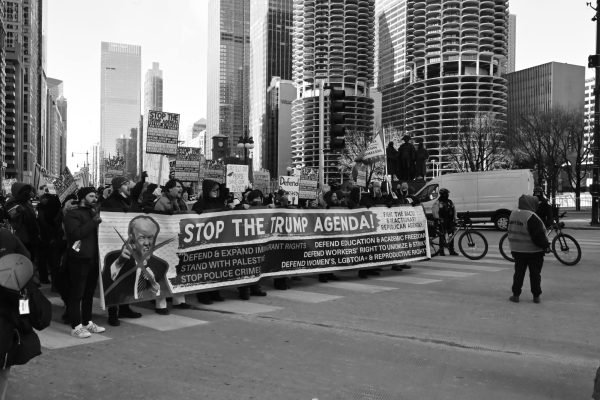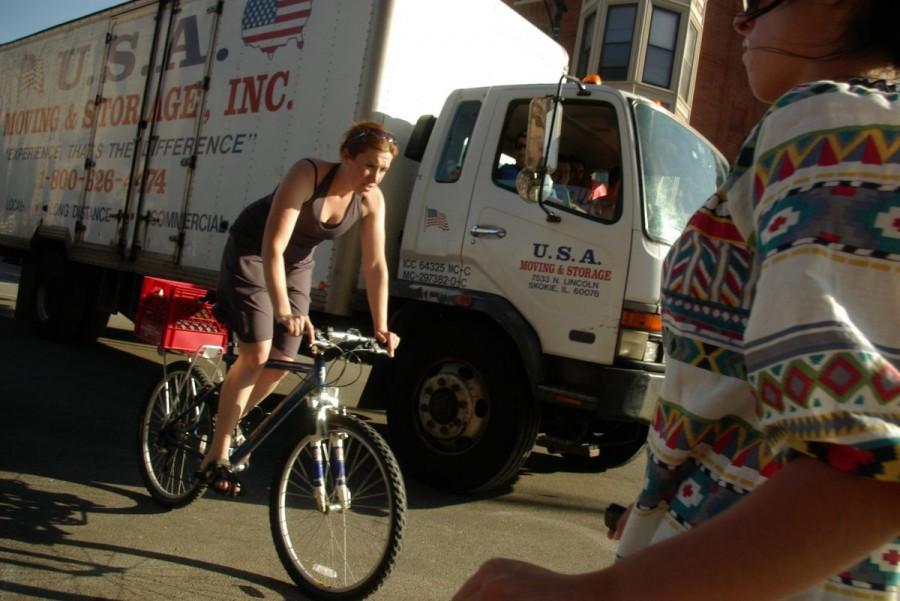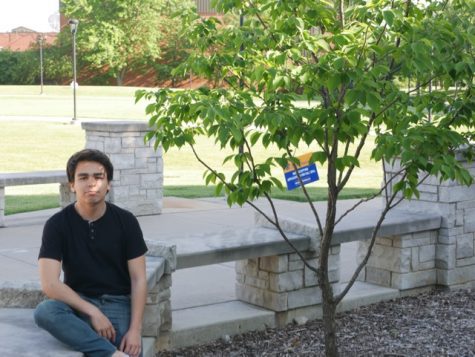Cars and Bikes: Whose Space Is It Anyway?
Photo courtesy of Wikimedia Commons
Chicago pedestrians, bicyclists and motorist share the road on their commute.
Most people like driving cars, but few prefer a bicycle as their mode of transportation.
However, both vehicles sharing the same patch of road to traverse from one point to another can spell trouble within seconds.
Cars can have one or two (or even four) legal lanes available to drive on the streets of Chicago. But a bicyclist will have one narrow, side lane to roll through, and that’s if the road even has a bicycle lane.
Generally, it shouldn’t be a problem for drivers to acknowledge and respect the space required for a bicyclist to maneuver, if all streets did contain the lane. However, some major streets like Pulaski and Kimball have no designated lane for bikes to ride in, which can lead to some dangerous steering in and out of traffic.
In addition, there is no guarantee that every driver on the road will be compliant to giving the bicyclist the space and time to safely continue riding, whether for legitimate reasons or feelings of contempt. Some drivers will give kind gestures and patience, others will flip you the bird and call you an anus.
One could question the possibility of riding a bike on the sidewalk, which is far from incoming traffic and more or less stable pavement. However, according to Title 9, Section 52 and Line 20 of Municipal Safety Codes of Chicago, it is stated that “No person 12 or more years of age shall ride a bicycle upon any sidewalk in any district, unless such sidewalk has been officially designated and marked as a bicycle route, or such sidewalk is used to enter the nearest roadway, intersection or designated bicycle path, or to access a bicycle share station.”
Anyone caught riding on the sidewalk, in sight of local ordinance, is subject to a monetary fine and/or jail time.
Legal problems aside, it is generally a safety hazard to be in control of a moving vehicle through a path for pedestrians; the same can be said for the drivers of a car. People have to move out of the way of the bicyclist either on someone’s yard, on the road full of oncoming traffic, or off of a bridge. If people stay in the direction of the bicycle, they could be injured with sufficient force.
In Chicago, bicyclist deaths have risen in recent years, totaling 80 deaths from 2010 to 2013. At the time, the toll had increased by 16%, placing Illinois as the 5th state in the nation for bicyclist fatalities, according to the Highway Safety Association.
Riding a bike on the sidewalk also draws hostility from pedestrians, who mostly just yell at the rider to get off the sidewalk, supplemented with an insult that questions the rider’s abilities and/or intelligence.
Personally speaking as a bicyclist, I find it quite difficult to ride in Chicago, especially in streets that don’t give us the space to move around dangerous spots on the road.
Potholes litter the sides of the road on some of the major paths to the university. It is because of this that at best, the bicyclist will have a sore bottom and at worst, the steering is affected just enough to lead a bike into traffic or in the path of pedestrians, causing a collision.
The most severe consequence that arises from this encounter is the potential risk factor to the bicyclist’s life. It cannot be determined which party would survive, given the destruction of the collision.
The truth of the matter is that streets are inconsistent in quality, the drivers on the streets focus solely on getting to their endpoint, and bicyclists are stuck in the middle to make do with the situation.
Bicyclists have as much right to be on the streets as any motorist does, and they deserve similar respect and safety as that of a pedestrian. The problem lies in the fact that these deaths are entirely preventable and are simply a case of miscommunication and human error. With the unity of the motorist and the bicyclist’s road safety, and proper communication between both parties, fewer collisions can take place and bicyclists can feel safe in riding alongside cars.
In the words of Jim Merrell, campaign director of the Active Transportation Alliance, “At the end of the day, all traffic fatalities are preventable. The only number of fatalities that we will accept is zero.”
Your donation will support the student journalists of Northeastern Illinois University's The Independent, either in writers' payment, additional supplies and other items of note. Your contribution will allow us to purchase additional equipment for writers/photographers/illustrators and cover our annual website hosting costs.





